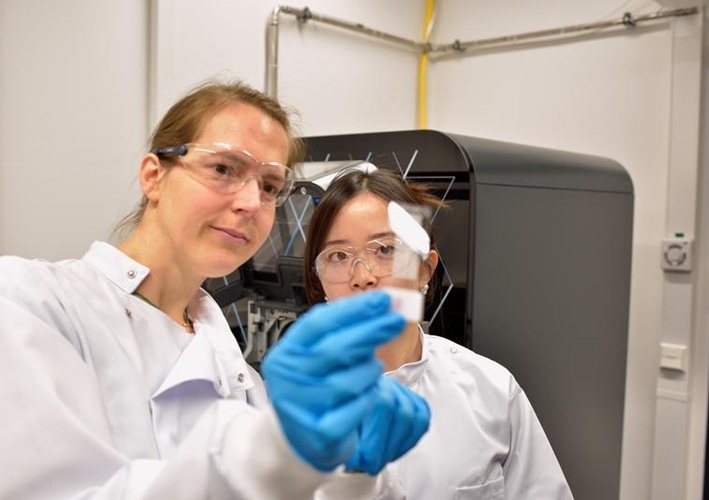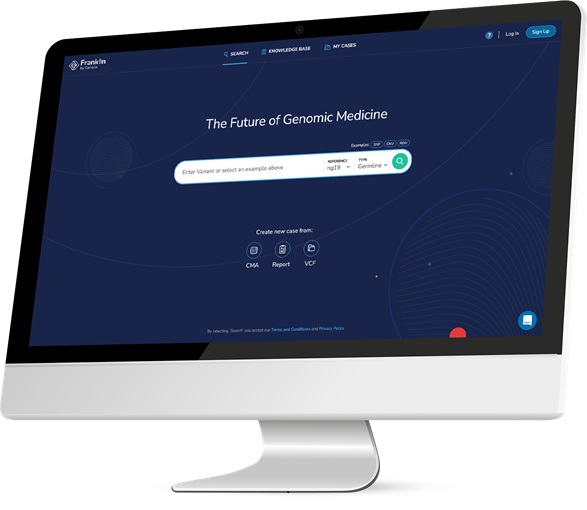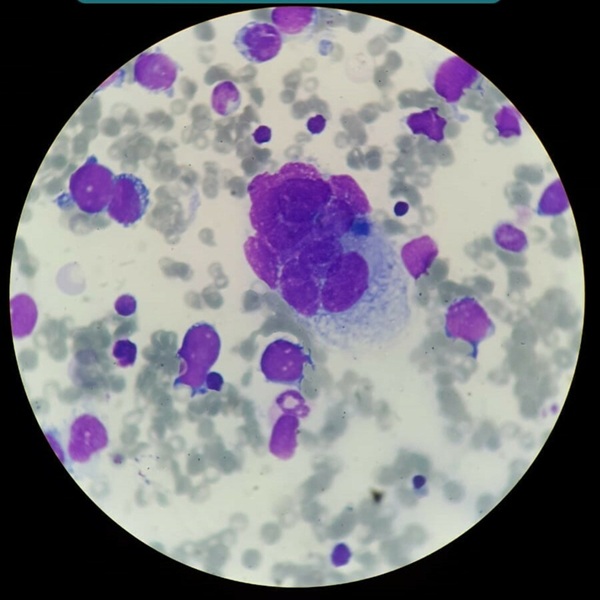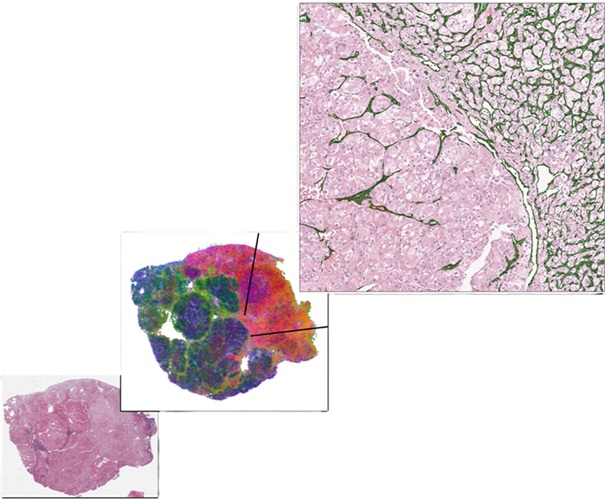Tumor Markers Associated with H. Pylori Infection
|
By LabMedica International staff writers Posted on 19 Sep 2018 |

Image: Immunostaining of Helicobacter pylori infection in the small intestine. The small spiral-curved shaped bacterium can be seen clearly using a ×100 oil objective under the microscope (Photo courtesy of BioCare Medical).
Helicobacter pylori infection is a major cause of several cancers such as gastric, pancreatic and lung. The relationship between H. pylori and tumor markers continues to remain unclear. As one of the leading causes of morbidity and mortality globally, cancer represents a major detrimental public health problem worldwide.
There are various known important tumor biomarkers in cancer progression such as carcinoembryonic antigen (CEA), cancer antigens (CA) 153, CA199, CA724, CA125 and alpha-fetoprotein (AFP) which have been shown in the past to have various evidence in diagnostic modalities. These tumor markers were reported to have a close relationship with specific cancers.
A team of scientists led by those at Aerospace Center Hospital (Beijing, China) carried out a observational retrospective study and recruited a total of 14,689 subjects were included and 6,493 (44.2%) subjects were infected by H. pylori. The subjects had a mean age of 45 ±18 years. There were 4,530 (31.0%) female subjects. H. pylori infection status was assessed by ELISA specific for anti-H. pylori antibodies, particularly IgG and IgM. If both serological testing results were positive, the subject was diagnosed as H. pylori infection.
Cut-off values were administered to distinguish whether tumor marker levels were normal or abnormal. According to previous studies, the cut-off values of serum CEA, AFP, CA199, CA724, CA153 and CA125 were set to 5 ng/mL, 10 ng/mL, 37 U/mL, 10 U/mL, 25 U/mL and 35 U/mL, respectively. The ratios of individual biomarkers were measured between the two groups. The ratio is defined according to the cut-off value. Abnormal ratio means the percentage of individuals with abnormal CEA (i.e., CEA>5 ng/mL) in total H. pylori (+) subjects or individuals with abnormal CEA in total H. pylori (−) subjects.
The scientists reported that after adjusting for the confounding factors, infections with H. pylori were found to be significantly associated with abnormal ratios in CEA, AFP and CA724 of H. pylori (+) to H. pylori (–) groups. Significant positive correlation was found between H. pylori infection and CEA values. Significant differences were found in both low-density lipoprotein (LDL) and high-density lipoprotein (HDL) levels between H. pylori (+) and H. pylori (−) groups.
The authors concluded that in their observational retrospective study illustrated that higher abnormal ratios of CEA, AFP and CA724 were observed in infected to uninfected subjects. Higher level of CEA was also found to be related to H. pylori infection after controlling confounders. The serological testing for the presence of two antibodies against H. pylori, IgG and IgM, indicate a past exposure to this bacterium rather than a current exposure. These findings could aid in the earlier diagnosis and intervention provided to better patient’s quality of life. The study was published on August 23, 2018, in the journal BMJ Open.
Related Links:
Aerospace Center Hospital
There are various known important tumor biomarkers in cancer progression such as carcinoembryonic antigen (CEA), cancer antigens (CA) 153, CA199, CA724, CA125 and alpha-fetoprotein (AFP) which have been shown in the past to have various evidence in diagnostic modalities. These tumor markers were reported to have a close relationship with specific cancers.
A team of scientists led by those at Aerospace Center Hospital (Beijing, China) carried out a observational retrospective study and recruited a total of 14,689 subjects were included and 6,493 (44.2%) subjects were infected by H. pylori. The subjects had a mean age of 45 ±18 years. There were 4,530 (31.0%) female subjects. H. pylori infection status was assessed by ELISA specific for anti-H. pylori antibodies, particularly IgG and IgM. If both serological testing results were positive, the subject was diagnosed as H. pylori infection.
Cut-off values were administered to distinguish whether tumor marker levels were normal or abnormal. According to previous studies, the cut-off values of serum CEA, AFP, CA199, CA724, CA153 and CA125 were set to 5 ng/mL, 10 ng/mL, 37 U/mL, 10 U/mL, 25 U/mL and 35 U/mL, respectively. The ratios of individual biomarkers were measured between the two groups. The ratio is defined according to the cut-off value. Abnormal ratio means the percentage of individuals with abnormal CEA (i.e., CEA>5 ng/mL) in total H. pylori (+) subjects or individuals with abnormal CEA in total H. pylori (−) subjects.
The scientists reported that after adjusting for the confounding factors, infections with H. pylori were found to be significantly associated with abnormal ratios in CEA, AFP and CA724 of H. pylori (+) to H. pylori (–) groups. Significant positive correlation was found between H. pylori infection and CEA values. Significant differences were found in both low-density lipoprotein (LDL) and high-density lipoprotein (HDL) levels between H. pylori (+) and H. pylori (−) groups.
The authors concluded that in their observational retrospective study illustrated that higher abnormal ratios of CEA, AFP and CA724 were observed in infected to uninfected subjects. Higher level of CEA was also found to be related to H. pylori infection after controlling confounders. The serological testing for the presence of two antibodies against H. pylori, IgG and IgM, indicate a past exposure to this bacterium rather than a current exposure. These findings could aid in the earlier diagnosis and intervention provided to better patient’s quality of life. The study was published on August 23, 2018, in the journal BMJ Open.
Related Links:
Aerospace Center Hospital
Latest Clinical Chem. News
- AI-Powered Blood Test Accurately Detects Ovarian Cancer
- Automated Decentralized cfDNA NGS Assay Identifies Alterations in Advanced Solid Tumors
- Mass Spectrometry Detects Bacteria Without Time-Consuming Isolation and Multiplication
- First Comprehensive Syphilis Test to Definitively Diagnose Active Infection In 10 Minutes
- Mass Spectrometry-Based Monitoring Technique to Predict and Identify Early Myeloma Relapse
- ‘Brilliantly Luminous’ Nanoscale Chemical Tool to Improve Disease Detection
- Low-Cost Portable Screening Test to Transform Kidney Disease Detection
- New Method Uses Pulsed Infrared Light to Find Cancer's 'Fingerprints' In Blood Plasma
- Carbon Nanotubes Help Build Highly Accurate Sensors for Continuous Health Monitoring
- Paper-Based Device Boosts HIV Test Accuracy from Dried Blood Samples
- AI-Powered Raman Spectroscopy Method Enables Rapid Drug Detection in Blood
- Novel LC-MS/MS Assay Detects Low Creatinine in Sweat and Saliva
- Biosensing Technology Breakthrough Paves Way for New Methods of Early Disease Detection
- New Saliva Test Rapidly Identifies Paracetamol Overdose
- POC Saliva Testing Device Predicts Heart Failure in 15 Minutes

- Screening Tool Detects Multiple Health Conditions from Single Blood Drop
Channels
Clinical Chemistry
view channel
AI-Powered Blood Test Accurately Detects Ovarian Cancer
Ovarian cancer ranks as the fifth leading cause of cancer-related deaths in women, largely due to late-stage diagnoses. Although over 90% of women exhibit symptoms in Stage I, only 20% are diagnosed in... Read more
Automated Decentralized cfDNA NGS Assay Identifies Alterations in Advanced Solid Tumors
Current circulating cell-free DNA (cfDNA) assays are typically centralized, requiring specialized handling and transportation of samples. Introducing a flexible, decentralized sequencing system at the... Read more
Mass Spectrometry Detects Bacteria Without Time-Consuming Isolation and Multiplication
Speed and accuracy are essential when diagnosing diseases. Traditionally, diagnosing bacterial infections involves the labor-intensive process of isolating pathogens and cultivating bacterial cultures,... Read more
First Comprehensive Syphilis Test to Definitively Diagnose Active Infection In 10 Minutes
In the United States, syphilis cases have surged by nearly 80% from 2018 to 2023, with 209,253 cases recorded in the most recent year of data. Syphilis, which can be transmitted sexually or from mother... Read moreMolecular Diagnostics
view channel
Single Blood Test Could Detect Different Types of Cancer at Early Stages
Currently, reliable screening for only a few types of cancer is available, such as those affecting the breast, bowel, cervix (neck of the womb), and lung for individuals at high risk. While these screenings... Read more
Innovative Test Accurately Evaluates Liver Fibrosis Severity in Just 18 Minutes
Metabolic dysfunction–associated steatotic liver disease (MASLD) affects approximately 30% of the population and is one of the leading causes of chronic liver disease in developed countries.... Read more
POC Oral Swab Test to Increase Chances of Pregnancy in IVF
Approximately 15% of couples of reproductive age experience involuntary childlessness. A significant reason for this is the growing trend of delaying family planning, a global shift that is expected to... Read more
Microbial Cell-Free DNA Test Accurately Identifies Pathogens Causing Pneumonia and Other Lung Infections
Bronchoalveolar lavage (BAL) is a commonly used procedure for diagnosing lung infections, especially in immunocompromised patients. However, standard tests often fail to pinpoint the exact pathogen, leading... Read moreHematology
view channel
First Point-of-Care Heparin Monitoring Test Provides Results in Under 15 Minutes
Heparin dosing requires careful management to avoid both bleeding and clotting complications. In high-risk situations like extracorporeal membrane oxygenation (ECMO), mortality rates can reach about 50%,... Read more
New Scoring System Predicts Risk of Developing Cancer from Common Blood Disorder
Clonal cytopenia of undetermined significance (CCUS) is a blood disorder commonly found in older adults, characterized by mutations in blood cells and a low blood count, but without any obvious cause or... Read moreMicrobiology
view channel
New Blood Test Detects Up to Five Infectious Diseases at POC
Researchers have developed a prototype flow-through assay capable of detecting up to five different infections, with results that can be quickly analyzed and transmitted via a specialized smartphone app.... Read more
Molecular Stool Test Shows Potential for Diagnosing TB in Adults with HIV
Tuberculosis (TB), caused by the bacterium Mycobacterium tuberculosis, led to 1.25 million deaths in 2023, with 13% of those occurring in people living with HIV. The current primary diagnostic method for... Read morePathology
view channel
Groundbreaking Chest Pain Triage Algorithm to Transform Cardiac Care
Cardiovascular disease is responsible for a third of all deaths worldwide, and chest pain is the second most common reason for emergency department (ED) visits. With EDs often being some of the busiest... Read more
AI-Based Liquid Biopsy Approach to Revolutionize Brain Cancer Detection
Detecting brain cancers remains extremely challenging, with many patients only receiving a diagnosis at later stages after symptoms like headaches, seizures, or cognitive issues appear. Late-stage diagnoses... Read moreTechnology
view channel
Advanced Predictive Algorithms Identify Patients Having Undiagnosed Cancer
Two newly developed advanced predictive algorithms leverage a person’s health conditions and basic blood test results to accurately predict the likelihood of having an undiagnosed cancer, including ch... Read more
Light Signature Algorithm to Enable Faster and More Precise Medical Diagnoses
Every material or molecule interacts with light in a unique way, creating a distinct pattern, much like a fingerprint. Optical spectroscopy, which involves shining a laser on a material and observing how... Read more
Disposable Microchip Technology Could Selectively Detect HIV in Whole Blood Samples
As of the end of 2023, approximately 40 million people globally were living with HIV, and around 630,000 individuals died from AIDS-related illnesses that same year. Despite a substantial decline in deaths... Read more
Pain-On-A-Chip Microfluidic Device Determines Types of Chronic Pain from Blood Samples
Chronic pain is a widespread condition that remains difficult to manage, and existing clinical methods for its treatment rely largely on self-reporting, which can be subjective and especially problematic... Read moreIndustry
view channel
Qiagen Acquires NGS Analysis Software Company Genoox
QIAGEN (Venlo, the Netherlands) has signed a definitive agreement to acquire Genoox (Tel Aviv, Israel), a provider of artificial intelligence (AI)-powered software that enables clinical labs to scale and... Read more
Cepheid and Oxford Nanopore Technologies Partner on Advancing Automated Sequencing-Based Solutions
Cepheid (Sunnyvale, CA, USA), a leading molecular diagnostics company, and Oxford Nanopore Technologies (Oxford, UK), the company behind a new generation of sequencing-based molecular analysis technologies,... Read more
Grifols and Tecan’s IBL Collaborate on Advanced Biomarker Panels
Grifols (Barcelona, Spain), one of the world’s leading producers of plasma-derived medicines and innovative diagnostic solutions, is expanding its offer in clinical diagnostics through a strategic partnership... Read more









 Assay.jpg)






